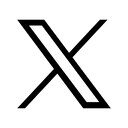2025 NTD 7th International Figure Painting Competition
Venue:Salmagundi Club
47 Fifth Avenue @ 12th Street | New York, NY 10003
The NTD Figure Painting Competition is one of a series of arts and culture events held by New Tang Dynasty (NTD) Television with the mission of promulgating time-tested traditions. The painting competition encourages artistic excellence within the Western oil painting tradition and provides artist with a platform to showcase their skills, talent, and vision while contributing to the revival of traditional classical/realist oil painting.
NTD's name draws inspiration from the noble legacy of the Tang Dynasty (618–907 C.E.), considered the golden age of Chinese spirituality and civilization. It was a time of peace, freedom, and high moral standards and, as a result, unparalleled cultural achievements. In the spirit of that legacy, NTD's painting competition emphasizes positive ideals, such as virtue, compassion, and beauty.
The NTD Figure Painting Competition celebrates the power of traditional values, inviting artists to create oil paintings with the central theme of pure truth, pure kindness, and pure beauty.
All fine artists, including professional oil painters, instructors, and students are invited to showcase their finest classical/realist figure paintings.
Requirements for Submitted Works: NEW!
- The submitted artwork must be an oil painting with a human figure as the main subject.
- Only works created entirely by hand on canvas using traditional realist techniques will be accepted.
- Photography, digital, AI-generated, or computer-generated artworks are not accepted.
- Any work that is not entirely hand-painted from scratch—such as those transferred to the substrate using digital, mechanical, photographic, or other methods—will not be accepted.
- Photographs may be used as references during the creative process but may not be used as the artwork itself. It is also acceptable to turn photographs into reference mock-ups to assist the creation of artwork. However, printing a photograph directly onto the canvas and painting over it will not be accepted as an artwork.
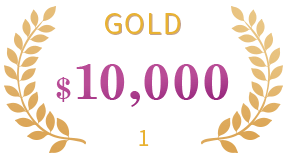

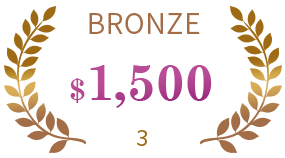
Also:
Outstanding Technique Award: US$1,000 (Each)
Profound Humanities Award: US$1,000 (Each)
Outstanding Youth Award: US$1,000 (Each)
Honorable Mention Award: several winners
Note: According to U.S. tax regulations, if the prize winner is a foreign individual (nonresident alien or foreign entity), up to 30% of the prize winnings are subject to tax withhold. It is the contestant's personal responsibility to file tax returns and obtain tax refunds.
1) The Finalist Exhibition will take place at the Salmagundi Club in New York City from January 18 to 24, 2026.(Address:47 Fifth Avenue @ 12th Street | New York, NY 10003)
2) The finalists are given the option to display their work for sale at the online gallery: (www.ArtNTD.com). Details will be included in the finalist notification.
3) Media coverage by NTD Television and The Epoch Times.
4) Complimentary Album: All finalists will receive a copy of 2025 7th NTD International Figure Painting Competition Art Album at the exhibition center or by post (postage to be borne by the artist).
The Award Ceremony will take place in New York City.
During the time of the exhibition, the Organizing Committee will hold seminars and museum/gallery tours for the finalists. The schedule will be provided in the finalist notification email and announced thereafter.
Award Ceremony and Events:
Submission deadline: July 31, 2025
Exhibition Dates: January 18 to 24, 2026
Venue: Salmagundi Club (Address:47 Fifth Avenue @ 12th Street | New York, NY 10003)
Submission Requirements
Application package
• Identification: Digital copy of a valid passport or driver's license, or a similar official identification document. NOTE: Contestants may use pseudonyms, in addition to providing their legal name. During and after the competition, the artist’s pseudonym will then be used for publicity purposes, such as in publications or in media coverage.
• Artwork Description: title, year of completion, medium (e.g., oil on linen/canvas/panel), size/dimensions in inches, and a written statement about the creative inspiration for the painting (no more than 100 words).
• Images: High-resolution digital photos of the painting(s) (size should be less than 30MB).
• Participants are encouraged to submit a painting process video, which may be used for promotional coverage or sales-related content if needed. NEW!
• Resume: Listing education, experience, accomplishments, and prizes with digital copies of the prize certificates.
• Note for Visa, if applicable: Applicants who need a visa for entries into the United States should add a note with their application requesting an official invitation to attend the Award Ceremony and competition-related events.
• Registration Fee: US$80 (up to 6 paintings).
• Payment methods include credit card, certified check, or money order. Please make your check payable to New Tang Dynasty, with a note of “NTD Figure Painting Competition”, and mail to: New Tang Dynasty Attn: Competition Team, 229 W 28th Street, 5th FL, New York, NY 10001, USA.
Registration
Online registration: fill in the registration form online
E-mail: For those who are unable to register online, please submit all required registration materials by email to: oilpainting@ntd.com with the subject line: “Figure Painting Competition Registration.”
*Please note, none of the submitted materials will be returned.
Finalists
Finalist will be notified by email no later than August 10, 2025.
Finalist should submit their original paintings by registered mail to reach the Competition Organization Committee (the address will be provided in the notice) by September 10, 2025.• Special Note: Any damage or loss of the original work during shipping is solely the responsibility of the finalist. The Organization Committee will open the package and check the work within 10 days upon arrival.
• Finalists are highly encouraged to submit their paintings framed. Otherwise, they may send their
painting(s) either on a stretcher(s) or rolled up. The finalist will then be required to pay for stretchers
and/or framing in New York. The reference framing prices are as follows (Actual cost will depend on
material used and details. There’s no limit to the size of the painting. The sizes listed below are just for reference when it comes to frame pricing.):
- 18 x 24 inches: US$150
- 24 x 36 inches: US$225
- 36 x 48 inches: US$350
- 48 x 72 inches: US$550
• Finalists will have the option to sell their work in an online gallery (www.ArtNTD.com)
Handling of Original Works after the Exhibition
After the exhibition, finalists must arrange the return of their original works. The Organizing Committee can temporarily store the finalists' original works for up to 30 days free of charge after the completion of the exhibition. Finalists will be charged US$10 per day if they fail to make the shipping arrangements within the 30-day free period.
• The Organizing Committee will issue a donation certificate(s) should contestants choose to donate their original artworks to the NTD International Figure Painting Competition.
• Please add a note, in the application, indicating your preferred handling option with the shipment of your original painting(s).
Accommodation and Transportation
• The Competition Organization Committee will recommend hotels to finalists and their traveling companions for the award ceremony and related events.
• Finalists and their traveling companions bear the costs of accommodation and transportation.
Copyright
• Contestants are entitled to the copyright of their submitted works and any related rights, and their registration to the competition serves as legal grounds. The Competition Organization Committee is not liable for any legal responsibilities due to artists’ intentional or unintentional negligence.
• The Competition Committee reserves the right to reproduce the finalists' works in accordance with relevant agreements. Contestants may be entitled to receive royalties from the copyright of their works as specified in these agreements.
Regulations
• Upon applying, a contestant acknowledges the competition rules and regulations.
• Contestants must obey the Organizer’s arrangements; otherwise, the Organizer has the right to rescind the eligibility of the contestant and any awards given. Contestants must certify the originality and authenticity of their works and are held accountable for any legal consequences for any plagiarism.
• NTD Television owns the copyright to the audio and video materials produced for the Competition.
• The decisions of the Panel of Judges will be final, and no appeal will be accepted.
• The Competition Organization Committee has the ultimate authority to interpret the Regulations and has the right to make any changes to them as necessary.
• Any changes to the Regulations for the Competition will be posted on the Competition website in a timely manner.
Shipping address
The mailing address will be provided in the finalist notification email.
Historically, oil painting has been the most influential medium in traditional Western art. In the past, artists received large commissions from religious leaders to create works that would glorify the magnificence of God and heaven, the high morality and exploits of sages, as well the beauty of folklore and nature. Human and animal figures were the most important subjects in oil paintings, which reached high levels of technical excellence.
Since oil painting was invented, realist oil painting has waxed and waned. Oil painting techniques have developed from immaturity to maturity, with different styles at different stages. Over time, with the gradual degeneration of moral values, realism faded away and was no longer the most popular form of artistic expression. Eventually realism gave way to abstraction in the late 1800’s, which continues to transform today. Modern art heralded many inventive styles that offered different approaches in contrast to realism. Such works express the sliding values, atrocities, and confusion of the modern world and often derive from personal ideas, revealing an array of disturbing feelings and concepts. At the height of modernism, however, realism never faded away entirely. It just became, temporarily, less popular.
We believe that artistic standards must exist. Artwork is most successful, enduring the test of time, when it contains compassion and grace, which helps to uplift people. The classic works passed down from generations, capture the wisdom, intelligence, and the painstaking efforts of our forefathers. They embody the lasting value of truthfulness, compassion, and beauty.
Prosperous periods in history were embedded with a deeply rooted cultural heritage from which people were able to prosper. Currently, humankind has been disconnected from a true aesthetic compass and seems to embrace a confusing set of values that prevent making sound judgments. Therefore, valuable artistic legacies of the past have become an important reference for humans to revive traditional artistic values.
In terms of artistic creation, learning from ancient people does not mean that we are fettered by old conventions. Every artist has his or her own personality traits, thoughts, and emotions, as well as his or her own concepts of creation, and influences from the environment. Artists with upright ideals, firmly implanted within them, definitely know how to strike a balance in accordance with the meaning of our contemporary times to create unique works rooted in tradition.
The NTDTV International Figure Painting Competition strives to help people retrieve traditional artistic values with compassion and grace. It will also provide artists with the opportunity to elevate their painting skills and further their artistic careers.
In the interest of enriching our lives and our culture, it's important to emphasize the value of traditional oil painting—currently termed realism.
1. Realism is the characteristic of Western traditional art and the standard for evaluating art1
Since ancient times, Western art has put much emphasis on accurate imitation of subjects to achieve a sense of visual reality. As a result, “realism” has been a basic criterion for judging an artist’s achievement.
This emphasis on realism can be traced back to ancient times, such as the statue of the ancient Egyptian queen Nefertiti as well as the sculptures of ancient Greece and Rome, which embody a combination of realism and idealization. Examples of works that exhibit both realism and idealism can be found everywhere.
Due to material and technical limitations, paintings in ancient times were far from being vivid and realistic. It was not until breakthroughs in concepts, techniques, and materials were made during the Renaissance that painting culminated to unprecedented magnificence.
The following were some of the major achievements in painting during the Renaissance:
• Further understanding of the natural proportions and scale of the human body, coupled with advancement in the understanding of anatomy, brought about accuracy in painting the human figure in a variety of positions;
• More vivid and realistic depiction of humans' internal state and emotions;
• Enhancement in depicting the precise feeling and detailed exquisiteness of objects.
These achievements during the Renaissance laid a solid foundation for genuine Western painting and set the standard for evaluating realist paintings. The success of realist painting also goes hand in hand with the improvement of materials. Among other innovations, the invention of oil painting has played a decisive role.
2. Prosperity and Glory of Oil Painting
Origin
Ancient humans used oil-based media as pigments and applied them to objects. Originally, oils only served as varnishes to be applied to painting, sculptures, and egg tempera. Not until the very beginning of the 15th century was a stable medium, with a gradual drying time invented. This new substance gradually took the place of egg tempera. Two Flemish artists, the brothers, Hubert van Eyck and Jan van Eyck experimented with mixing linseed oil, walnut oil, and resin to create a painting medium. The new painting medium and pigments produced a fine textured paint that remained wet for a longer period of time, enabling artists to perfectly sketch the forms of the figures. In addition, the dried pigments would not change hue and their gloss was preserved for a long time. Frescoes that had been painted with egg tempera lacked the advantages of oil paint. As a result, the medium of oil painting became popular among artists.
Initially Oil Painting Inherited the Elaborate Reality of Northern European Painters
With his specialty in delicate depiction, the Northern European artist, Jan van Eyck was a painter known for his meticulous manuscript copies. With his invention of painting with oil media on wood panel, he combined the Gothic artistic styles with oil painting techniques. Masterpieces of translucency and delicate texture were thus created, such as The Madonna of Chancellor Rolin and The Arnolfini Portrait. Artists patiently built the figures in multiple layers until the density and depth of color came together. The result was a textured object of unprecedented delicacy and vividness. Of course, the paintings by Jan van Eyck and Northern European artists were not completely realistic. Although the paintings presented delicate texture, the portrayed figures appeared rigid and unnatural. Compared with Italian artists, Jan van Eyck and other Northern European artists still had a way to go before achieving the appropriate proportions of the human body and aesthetic.
Italian Artists Glorified Oil Painting
In 1475, Antonello da Messina (1430-1479), an Italian artist influenced by Flemish art, introduced oil painting techniques to Venice.
With the invention of oil-based media, Italian artists who had a good command of realist painting found oil painting easy to master and invented new techniques. Venetian artists preferred to lay the foundation (underpainting) in brown and continued adding white to fresco, giving it a quality of opacity. As a result, paintings appeared comparatively dark. Meanwhile, Leonardo da Vinci (1452-1519) applied the technique of Sfumato to his paintings and displayed the features of oil paint to the fullest. The layered colors could represent gradual changes of light and shadow portraying the gentle texture of skin, and an overall gentle and mysterious atmosphere. Raffaello (Raphael) Sanzio (1483-1520) was also known as an excellent oil painter. He was famous for his masterpiece in buon fresco—a technique in which pigment is mixed with water and painted over a lime or plaster surface—titled, The School of Athens. Raphael combined previous artists’ wisdom and experience with skillful techniques of realism, composing figures in the classic values of the Renaissance. For instance, the small Cowper Madonna by Raphael presented an image of pure kindness and beauty in the human world. The expressions of the portraits appear noble, accompanied by exquisite and substantial texture in the clothing and objects. Another masterpiece, Transfiguration painted by Raphael in his old age skillfully combined two scenes into one. The two different scenes correspond with each other, and vivid expressions of the figures and their postures fill the painting with liveliness and vivacity. Oil painting was thus elevated to another unprecedented level in the Renaissance.
Since artists in Venice often painted on the walls of rich merchants’ mansions, they substituted canvas for panel. The results were big-sized oil paintings. Thereafter, canvas became popular as the main surface for oil painting. In the meantime, with availability of its materials and its expressiveness, oil painting gradually replaced other forms of painting and became the major painting medium of the era. Spirits of Classicism: Merging Idealism and Realism
There is no doubt that realism is one of the greatest achievements of painting from the Renaissance. However, the Renaissance also includes the rejuvenation of classicism. Classicism originates from the pursuit of perfect forms and eternal values that were strictly adhered to by ancient Greek and Roman artists. Classicism emphasizes rationality, clarity, order, proportion harmony, structural purity, and balance. It cherishes beauty as a whole, which also encompasses other virtues, such as: nobleness, dignity, and gentleness. In other words, art is not just vivid imitation of nature; it also pursues the manifestation of ideal, perfect paradigms out of nature’s forms and shapes so as to reach magnificent, eternal spiritual values. Therefore, classicism usually has characteristics of perfect form, tranquility, implication, elegance, and sedateness. Enlightened by unearthed ancient relics, the paintings during the Renaissance combined ideal beauty and realistic spirit and accomplished unprecedented achievements. They became a painting paradigm for later ages.
The accomplishment of Italian painters during the Renaissance attracted many artists from across Europe. They traveled to Italy to study the antique, learn new techniques, and gain new knowledge. As a result, classical oil painting that combines idealism and realism spread throughout Europe. Meanwhile, art academies began to be established for educating professionals and passing down the rich heritage of art.
Classicism and Academic Art
The first academy of art was founded in Florence, Italy in 1562 by Giorgio Vasari (1511~ 1574) who called it the Accademia dell’Arte del Disegno. Lectures on painting skills, including anatomy and geometry, were given to students there. Another academy, the Accademia di San Luca was founded in Rome a decade later. The Accademia di San Luca focused more on art theory.
Employing the operation model of the Accademia di San Lua, France established the Académie Royale de Peinture et de Sculpture2 in 1648 during Luis XIV’s reign. The art principle promoted in the French Académie was: “Painting has to follow the guideline of rationality.” In order to achieve lifelike accuracy, techniques such as perspective, mathematic proportions of the human body, composition, design, and skill in developing tonal value were all critical items in the curriculum. Since then, academies, such as England’s Royal Academy, that imitated the style and teaching methods of the French Académie were founded throughout Europe. The formal theoretical and academic training has become a tradition of Western painting. Nicholas Poussin3, a 17th century French painter who had profound influence in the thoughts of the French Académie, said, “A painting must incorporate the highest moral connotation, which is illustrated through the structure that can convey cognitive content.” Therefore, in the educational philosophy of the art academies, the artist must master the techniques of realistic depiction, as well embody the classical spirit, and deliver traditional values, unobtrusively exerting beneficial influence within society.
The excavation of ancient objects from Pompeii in the 18th century triggered another wave of public interest in studying ancient arts. In addition to appreciating and learning the arts of the Renaissance, people also attempted to directly study Greek and Roman classical art. In early 19th century when Napoleon4 was in power, he promoted fine arts with ancient magnificence and dignity. He also led experts and scholars in collecting and researching classical arts. He spared nothing in his efforts to push Neoclassicism forward. Rather than directly imitating the antique, the genuine spirit of Neoclassicism was to imitate the essence of aesthetic feeling. Morals, solemnity, earnestness, and the realistic spirit of dedicating oneself to these principles was particularly emphasized in Neoclassicism.
After he was appointed as the court painter by Napoleon, the French painter, Jacques-Louis David, (1748~1825) led French painting circles using the ideals of classical-realism. In selecting painting objects, David was fastidious about archaeological evidence and pursued genuine, realist painting. He picked ancient myths, legends, historical, heroic episodes, or contemporary outstanding events as the subjects for his paintings. Through solemn but drastic manifestation, his painting highlighted human dignified morals and noble thoughts, aiming at reminding viewers what had happened in the past. In form, he emphasized the exhibition of rationality and utilized the sketches of the Renaissance as the basis for his painting. The result was the revelation of Classical characters of purity and clarity, including precision of composition, overall harmony of forms, colors, and value as well as delicacy of the entire tableau.
Academic Art in the Later Age
Though traditional artistic concepts were supported by academic circles, they were in conflict with the degeneration of morality and secular taste. In the late 19th century, the French painter, William Adolphe Bouguereau, (1825~1905) insisted on his academic style and was antagonistic towards the popular art style of the time, known as, “Impressionism.” He told his students, “One has to seek Beauty and Truth, Sir! As I always say to my pupils, you have to work to the finish. There’s only one kind of painting. It is the painting that presents the eye with perfection, the kind of beautiful and impeccable enamel you find in Veronese and Titian.” In addition to Adolphe Bouguereau, there were quite a few other painters who simultaneously insisted on their historic mission during the same period of time. Frederic Leighton, (1830-1896) in the U.K., Sir Lawrence Alma-Tadema (1836-1912) in the Netherlands, are two examples of artists who were quite famous when they were alive, but ended up being regarded as conservatives and were even ignored by art historians. In reality, Adolphe Bouguereau did make some breakthroughs in figure painting techniques, especially in painting beautiful images of women and children. He painted tender, delicate, and transparent skin, pure and charming expressions, making his subjects appear closer to the reality of a magnificent life. Though works in the later age of academic art were physically beautiful, they seemed to lack depth in content. As a result, ideal beauty and realist painting techniques were not further developed to levels that would have created another new dimension of oil painting.
3. The importance of figure painting
Regardless of Eastern or Western style paintings, figure painting was the first subject that developed to maturity. On the one hand, this is because artists tend to depict the objects most familiar to them; while on the other hand, arts are closely related to beliefs. All genuine arts have their origins in temples. Ancient people believed that gods created human beings according to their own images, and they used human images to represent various gods.
During the Renaissance, due to the progress in realist techniques, not only did painters represent gods with realistic and perfect human images, but they also painted solemn, compassionate, sacred, and glorious images to honor gods. As Renaissance artists believed humans are created by God and are the most perfect beings in the world, their goal was to use the perfect human body to explore artistic possibilities. Da Vinci depicted human inner feelings by painting figures with expressive body language, while Michelangelo employed the figure as the carrier to convey his spirit and thoughts. The aesthetic feeling, dynamic state, spirit, and strength demonstrated in his figurative art practically reached the peak of perfection, which had a tremendous impact on current and future artists. Da Vinci put much emphasis on creating light atmosphere, while Michelangelo emphasized the structure and movements of the human body.
Realist figure painting techniques have improved along with the passage of time, but the degree of reality and deliberation varies with the time period and different regional styles. Painters in the Renaissance could already vividly depict the human figure’s outer appearance and inner feelings. Painters in Florence placed emphasis on drawing and structure, and those in Venice emphasized the display of color. As paintings increased in scale, drawing techniques became rather concise, and paintings were generally not as neat and as exquisite as the oil paintings created on wooden planks in earlier times. During the Neoclassical period, there was another peak in the production of realist figure oil paintings. The figures painted by Jacques-Louis David are not only vivid and realistic, with brilliant contours that represent human dignity and moral sentiments, but they also contain spiritual strength that can help uplift human morality. As for passionate romantic painters, the structure of their figures and painting styles are apparently not as exquisite or conscientious as those in the neoclassical period. Among the subjects of traditional paintings that depict humanity's noble morality and sentiment, figures are the soul in paintings. Therefore, whether the figures are vivid and whether the image is appropriate are directly related to the success of a painting. When figures are successfully painted, their vivid and heart-stirring elements may directly touch people's hearts, having an effect that is difficult to achieve through words. This highlights the advantage of painting.
The Value of Traditional Arts Will Yield Great Returns
Throughout the history of art, traditional paintings that are accepted and loved by many different cultures through many different time periods, advocate objective, realist skills and the inner meanings of pure goodness and pure beauty. These artworks will never lose their value regardless of changing times and locations because they conform to benevolence in humanity, which is also the eternal standard of the arts.
Traditional arts can change and influence human society unobtrusively and imperceptibly, and their influence can be very profound. Therefore, artists have a great responsibility to society. A wide variety of art is being made today. Art schools have been formed and have faded away. Consult your conscience and think about artwork that truly touches people’s hearts. Which are those that can positively guide society? Which are the eternal works of art that can truly be revered and studied for a hundred generations?
We believe that inheriting traditional, upright moral concepts, and creating truthful, compassionate, and beautiful artwork will benefit humanity and help establish a bright future in the world. We sincerely hope artists with foresight will strengthen their mission as artists and participate in the NTD International Figure Oil Painting Competition.
Footnotes:
[2] During Napoléon’s regime in 1803, Académie Royale de Peinture et de Sculpture (Royal Academy of Painting and Sculpture) merged with the Académie de Musique (Academy of Music, founded in 1669) and the Académie d’Architecture (Academy of Architecture, founded in 1671), to form the Académie des Beaux-Arts (Academy of Fine Arts).
[3] When people go to Rome to study artists’ theory and artwork of the high Renaissance in Italy, they highly praise Raphael’s artwork in particular. Raphael thought that a painting must have inner meanings of the highest moral standards and convey the structure of intellectual meaning. In order to make accurate and rational realist paintings, he used a small wax stage model with all the settings to practice composition and lighting. Then based on the effects the model represented, numerous drafts were created before starting the actual painting. In 1642, Charles Le Brun went to Rome to study painting, theory, and technique for four years under Poussin. When Louis XIV held the reins of government, Le Brun became the director of Royal Academy of Painting and Sculpture and established a system of rules which set the direction of French art academies that encouraged the rise of Neo-classical painters afterwards.
[4] Napoleon Bonaparte,1769~1821

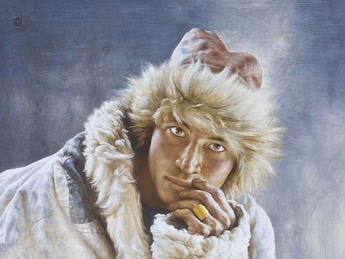

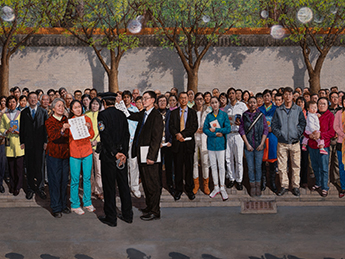
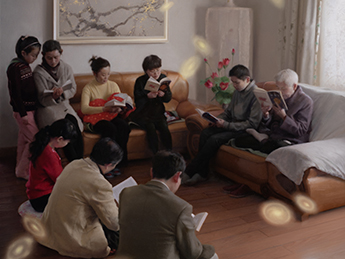
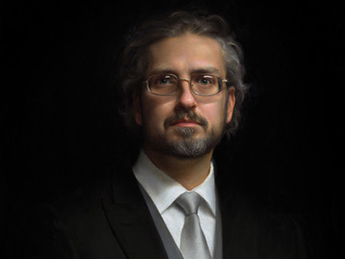
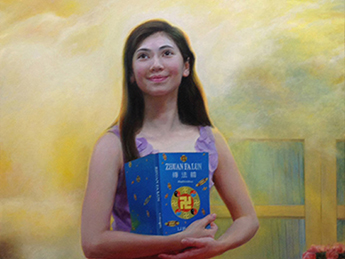
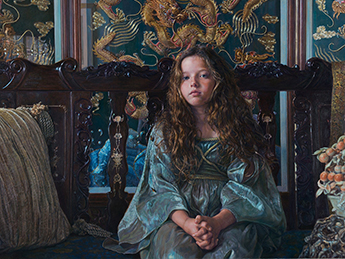
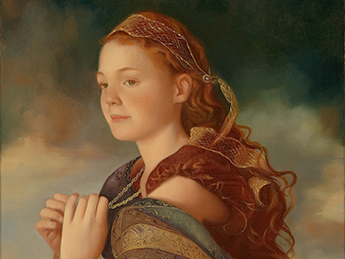
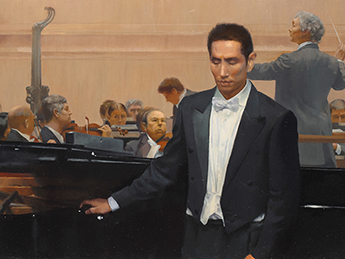
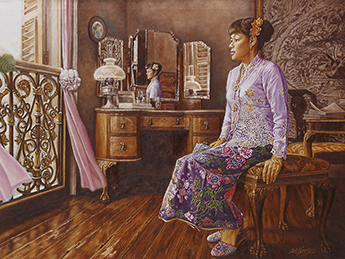
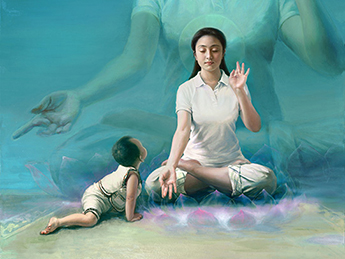
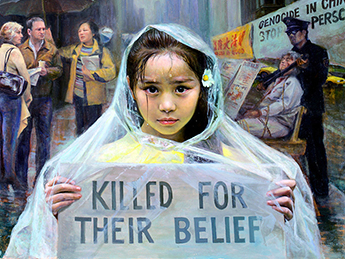
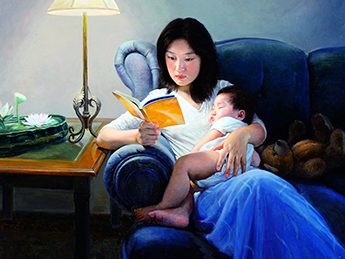
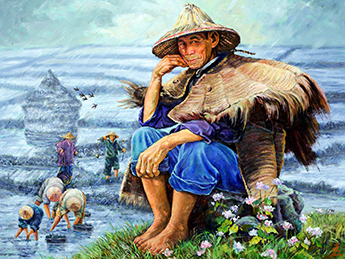
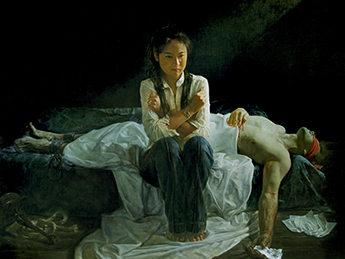
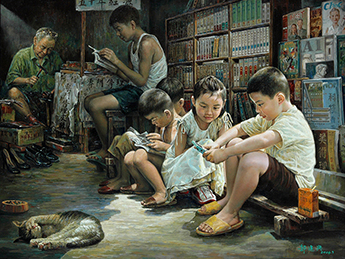
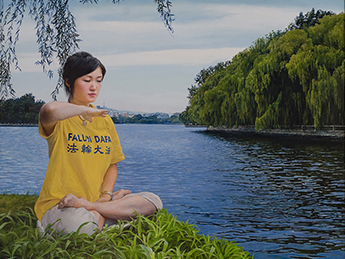
Please feel free to contact us should you have any suggestions.
Email
oilpainting@ntd.com

Telephone
1-855-561-0888




